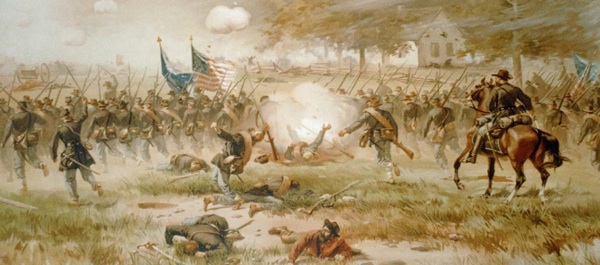Virtual Tour Antietam: The Civil War’s Bloodiest Day

The Antietam battlefield represents one of the more pristine areas among Civil War sites.
With the first days of September 1862 came a bothersome milieu of uncertainty on both sides of the American Civil War. The news from the Virginia front seemed unclear: Where was Robert E. Lee’s Army of Northern Virginia? How badly whipped was Union Maj. Gen. John Pope’s Army of Virginia at Second Bull Run (Second Manassas) in August? What plans did Lee have to capitalize on that victory? What actions should Union forces take to counteract whatever Lee might devise as his next move?
{default}Certainly the momentum now seemed to have shifted toward the Confederacy in that Maj. Gen. George McClellan’s and Pope’s efforts had failed and Lee’s army was reasonably close to Washington. Soldiers and civilians alike were breathing far easier in Richmond, awaiting a continued upturn in news from the Southern armies. On hearing Lee’s report on Second Bull Run, the war clerk John B. Jones responded, “That is glory enough for a week. When Lee says ‘signal victory,’ we know exactly what it means, and we breathe freely. Our generals never modify their reports of victories.”
Only days after the close of the Second Bull Run campaign, another major campaign commenced. Pope had lost any remaining credibility and the remnants of his army were absorbed into McClellan’s Army of the Potomac. Lee, on the other hand, was gaining confidence hourly and planned to bring the war onto Northern soil for the first time, easing war-torn Virginia, foraging in Maryland, perhaps gaining support from Marylanders with Southern sympathies, and maybe — with a victory fairly won on Northern ground — gaining recognition from Britain or France. Lee crossed the Potomac on September 4, 1862, and three days later concentrated in Frederick, Maryland. He planned to strike northward toward Harrisburg, Pennsylvania, cutting the major east-west railroads relied on by Union forces. Once in Maryland, however, the hoped-for pro-Confederacy rising by citizens did not materialize. Yet, McClellan pursued only slowly, with vast overestimations of Lee’s strength in mind. Then, on September 13, McClellan received one of the war’s greatest intelligence coups – he was handed a copy of Lee’s Special Order No. 191, containing the entire Confederate campaign plan. Union soldiers taking a break from hard marching discovered some cigars wrapped in paper. The paper turned out to be a copy of Lee’s campaign plan — a copy intended for Confederate Major General Daniel Harvey Hill. Amazingly, however, McClellan did nothing for more than 16 critical hours.
When McClellan finally pursued, Lee was informed of his find. The first clashes occurred at South Mountain in western Maryland on September 14 as Hill attempted to block Turner’s Gap (see "Legendary Combat Units: The Union Iron Brigade,” July 2008 ACG). The Union IX Army Corps commander, Major General Jesse L. Reno, was killed there. To the south, at Crampton’s Gap, Major General William B. Franklin attacked Confederates under Major General Lafayette McLaws. Meanwhile, Lee had dispatched Jackson to capture the strategically placed town of Harpers Ferry, Virginia, which Jackson accomplished in splendid style on September 15. He then moved to rejoin Lee’s main body, which lay to the north at the town of Sharpsburg, Maryland.
Within days, Union and Confederate forces concentrated in the fields and rolling hills near the tiny town, setting the stage for the bloodiest single-day battle of the war.
[continued on next page]


0 Comments
Trackbacks/Pingbacks